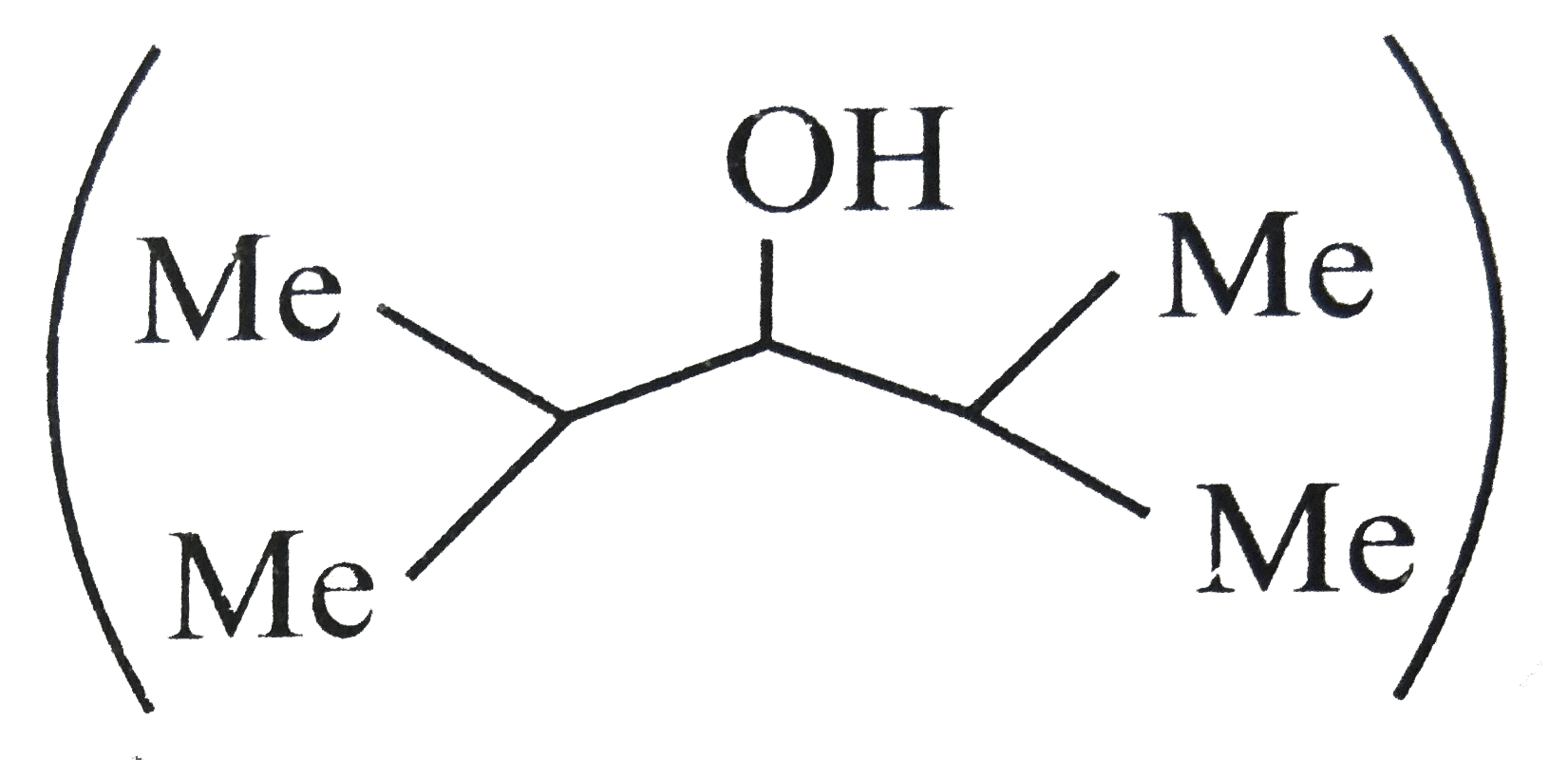Propene reacts with HBr to give isopropyl bromide but does not give n-propyl bromide.
To understand why propene reacts with HBr to give isopropyl bromide but does not give n-propyl bromide, we can break down the reaction step by step.
Step 1: Identify the Structure of Propene
Propene is an alkene with the molecular formula C3H6. Its structure can be represented as:
CH3CH=CH2
Step 2: Understand the Reaction with HBr
When propene reacts with HBr, the reaction can be described as follows:
HBr→H++Br−
Here, H+ acts as an electrophile and Br- acts as a nucleophile.
Step 3: Electrophilic Attack
The double bond (π bond) in propene is electron-rich and will attract the H+ ion. This can happen at either of the two carbons involved in the double bond:
1. If H+ attaches to the terminal carbon (C1), we get:
CH3CH+CH2 (secondary carbocation)
2. If H+ attaches to the middle carbon (C2), we get:
CH3C+CH2H (primary carbocation)
Step 4: Carbocation Stability
Now, we need to consider the stability of the carbocations formed:
- The carbocation formed at C1 (secondary carbocation) is more stable than the one formed at C2 (primary carbocation) because it is stabilized by the inductive effect of the adjacent methyl groups.
Step 5: Nucleophilic Attack by Br-
Since the secondary carbocation is more stable, the Br- will preferentially attack this carbocation:
CH3C+CH2+Br−→CH3C(Br)CH3
This results in the formation of isopropyl bromide (2-bromopropane).
Step 6: Why n-Propyl Bromide is Not Formed
The primary carbocation (formed by H+ attaching to C2) is less stable and will not lead to the formation of n-propyl bromide. Additionally, if the primary carbocation were to form, it would undergo a rearrangement (1,2-hydride shift) to form the more stable secondary carbocation.
Conclusion
Thus, the reaction of propene with HBr leads to the formation of isopropyl bromide as the major product due to the stability of the secondary carbocation, while n-propyl bromide does not form because the primary carbocation is less stable and rearranges.
---
Propene is an alkene with the molecular formula C3H6. Its structure can be represented as:
CH3CH=CH2
When propene reacts with HBr, the reaction can be described as follows:
HBr→H++Br−
Here, H+ acts as an electrophile and Br- acts as a nucleophile.
The double bond (π bond) in propene is electron-rich and will attract the H+ ion. This can happen at either of the two carbons involved in the double bond:
1. If H+ attaches to the terminal carbon (C1), we get:
CH3CH+CH2 (secondary carbocation)
2. If H+ attaches to the middle carbon (C2), we get:
CH3C+CH2H (primary carbocation)
Now, we need to consider the stability of the carbocations formed:
- The carbocation formed at C1 (secondary carbocation) is more stable than the one formed at C2 (primary carbocation) because it is stabilized by the inductive effect of the adjacent methyl groups.
Since the secondary carbocation is more stable, the Br- will preferentially attack this carbocation:
CH3C+CH2+Br−→CH3C(Br)CH3
This results in the formation of isopropyl bromide (2-bromopropane).
The primary carbocation (formed by H+ attaching to C2) is less stable and will not lead to the formation of n-propyl bromide. Additionally, if the primary carbocation were to form, it would undergo a rearrangement (1,2-hydride shift) to form the more stable secondary carbocation.
Thus, the reaction of propene with HBr leads to the formation of isopropyl bromide as the major product due to the stability of the secondary carbocation, while n-propyl bromide does not form because the primary carbocation is less stable and rearranges.
Topper's Solved these Questions
- HYDROCARBONSBOOK - VMC MODULES ENGLISHCHAPTER - HYDROCARBONSEXERCISE - JEE Main Archive
46 Videos
- HALOALKANES AND HALOARENESBOOK - VMC MODULES ENGLISHCHAPTER - HALOALKANES AND HALOARENESEXERCISE - IN-CHAPTER EXERCISE - F
6 Videos
- ICONIC EQUILIBRIUMBOOK - VMC MODULES ENGLISHCHAPTER - ICONIC EQUILIBRIUMEXERCISE - IMPECCABLE
50 Videos
Similar Questions
Knowledge Check
Arrange the following alkyl chlorides in order of decreasing reactivity in an SN1 reaction:
(I) isopropyl bromide (II) propyl bromide br> (III) tert-butyl bromide (IV) methyl bromideA(III)>(I)>(II)>(IV)B(I)>(III)>(IV)>(II)C(IV)>(III)>(II)>(I)D(I)>(II)>(III)>(IV)Propene reacts with Br2 to give 1, 2-dibromopropane. The anti-addition takes place due to the formation of intermadiate :
ACH3−Br∣CH−⊕CH2B CH3C−⊕CH−CH2−BrDNone of these
CH3C−⊕CH−CH2−BrDNone of theseMethyl bromide reacts with AgF to give methyl fluoride and silver bromide. This reaction is called
AFitting reactionBSwart reactionCWurtz reactionDFinkelstein reaction
How will you convert ?
n-Propyl bromide into isopropyl bromide.
View SolutionPropyl ester reacts with isopropyl magnesium bromide to give 2∘ alcohol
 The ester is :
The ester is :
View SolutionWhich of the following reagents will be able to disguish between allyl bromide and n− propyl bromide?
View SolutionToluene reacts with bromine in the presence of the light to give benzyl bromide, while in presence of FeBr3 it gives p-bromotoluene. Give explanation for the above observation.
View SolutionDraw structure for n-pentyl bromide
View Solution